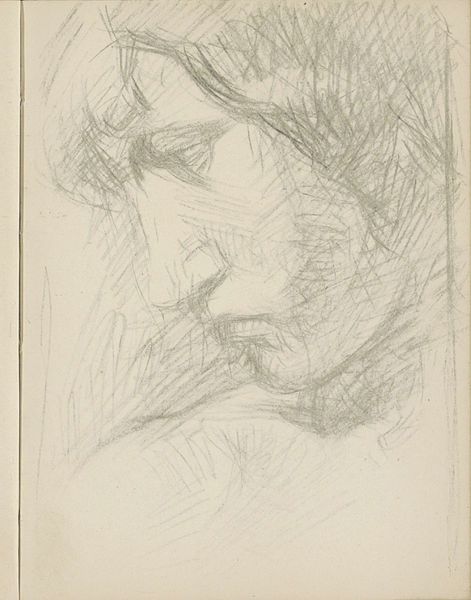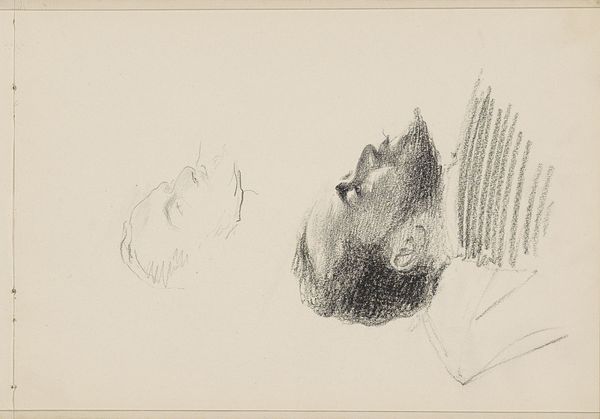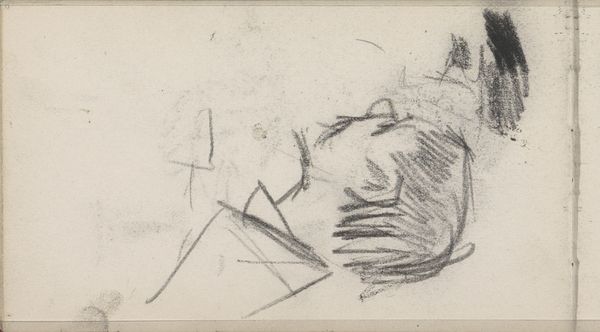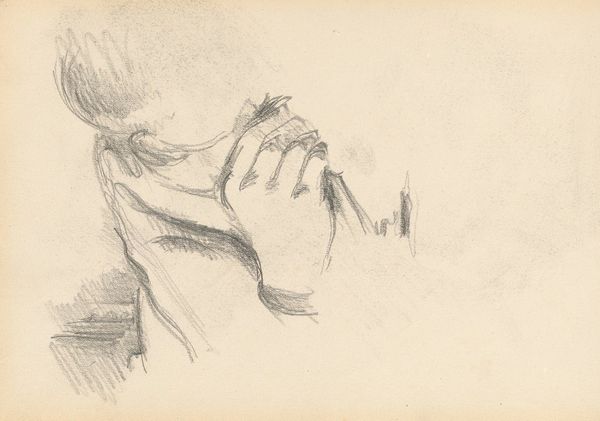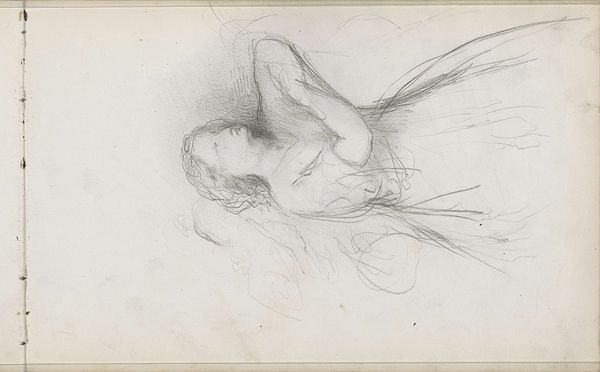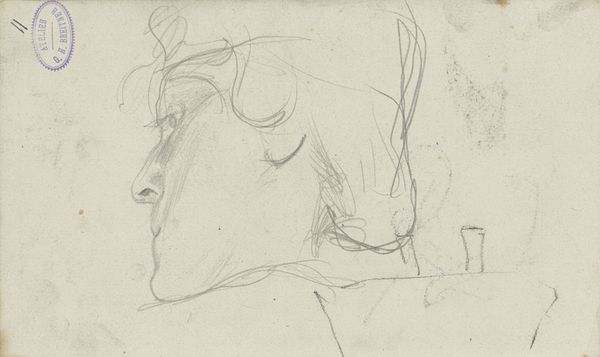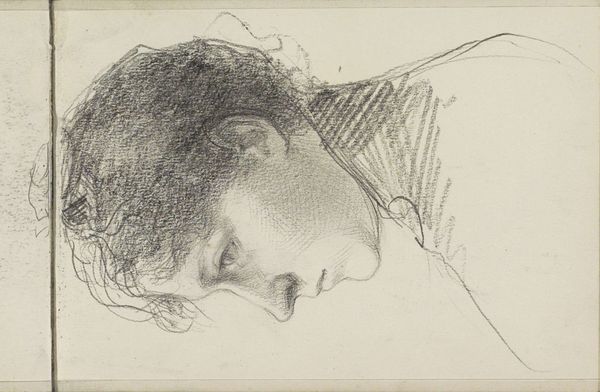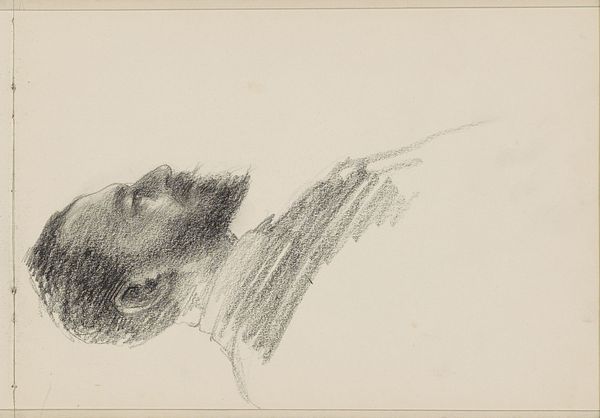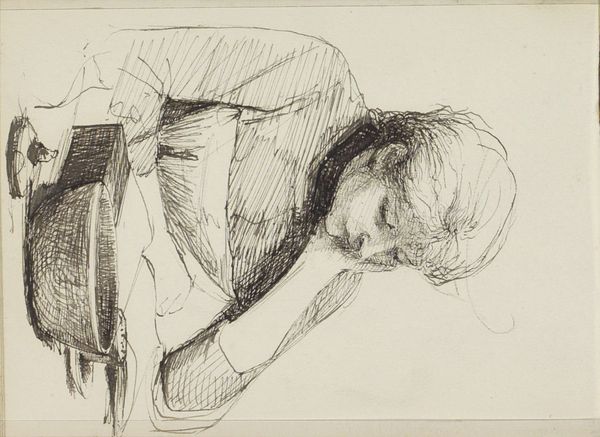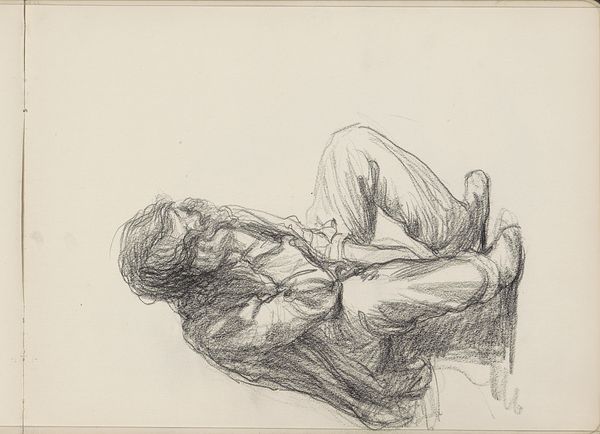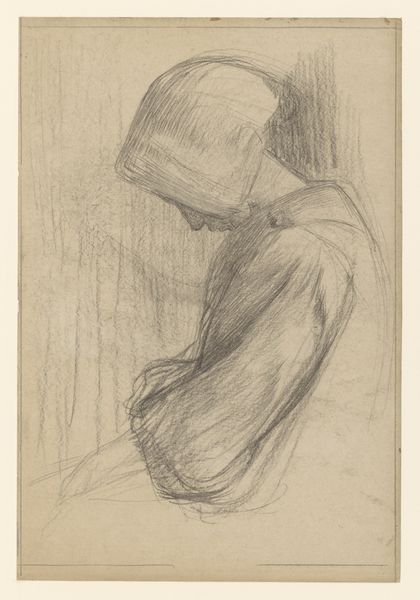
drawing, pencil
#
portrait
#
pencil drawn
#
drawing
#
amateur sketch
#
facial expression drawing
#
light pencil work
#
impressionism
#
pencil sketch
#
figuration
#
portrait reference
#
pencil drawing
#
detailed observational sketch
#
pencil
#
portrait drawing
#
pencil work
Copyright: Rijks Museum: Open Domain
Bramine Hubrecht made this sketch of a smiling woman's head and forearm, likely toward the end of the 19th century, using graphite on paper. While we think of drawing as a preliminary activity—preparatory to a final painting or sculpture—it’s worth noting that the act of drawing is central to a skilled artist’s repertoire. The marks made on the paper’s surface are economical; they allow for the emergence of an image with a minimum of labor, and are of course reproducible on a mass scale. As you can see here, Hubrecht’s hand deftly suggests form through the build-up of lines and shading, particularly around the woman’s neck and the hollow of her cheek. The density of graphite creates depth, while the open spaces and sketchy lines around the edges give the image an airy, unfinished quality. By appreciating the labor and the subtle skill involved in such a study, we move beyond the subject portrayed, and toward an understanding of the artist’s practice. In so doing, we move a little closer to the work itself.
Comments
No comments
Be the first to comment and join the conversation on the ultimate creative platform.
